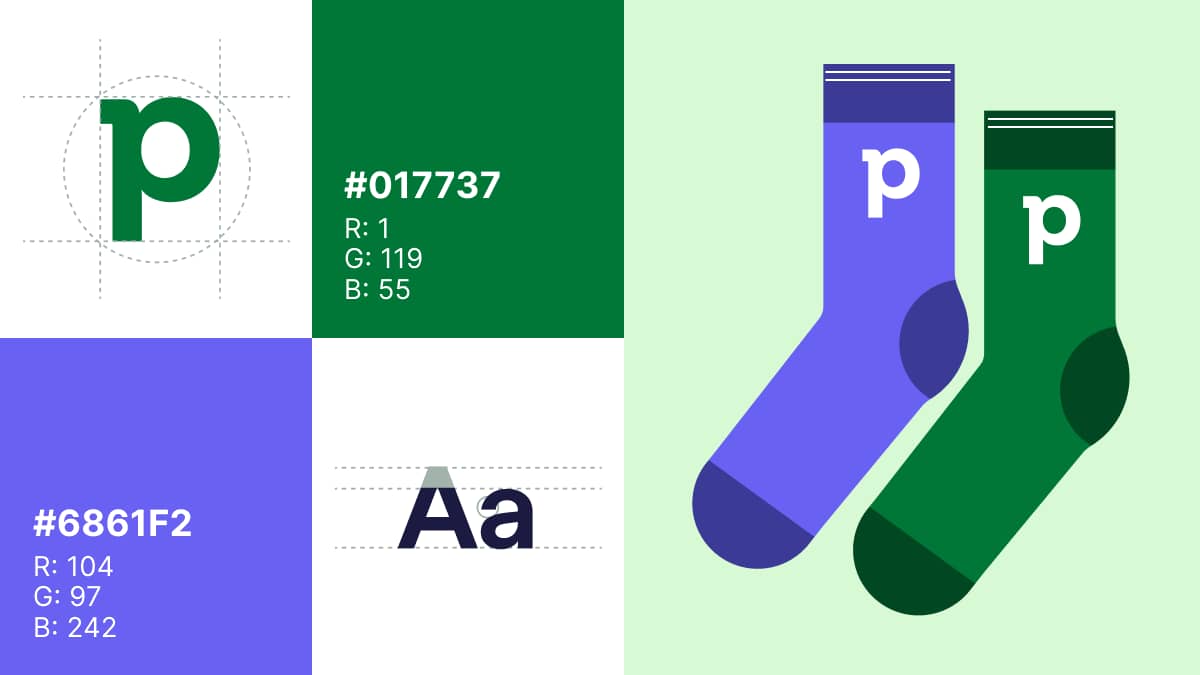Email is still one of the most widely used tools in business, from prospecting and follow-ups to proposals and support. While teams spend time fine-tuning subject lines and calls-to-action, the font itself is often overlooked.
The right email font does more than look tidy. It affects how your message is read, perceived and acted on. A professional, readable font helps build trust and clarity. A cluttered or inconsistent one can distract or create doubt, especially in high-stakes conversations.
The guide covers the best fonts for business emails, the logic behind choosing them and common pitfalls to avoid. Whether you’re emailing leads, partners or customers, font choice plays a small but measurable role in how your brand is received.
Key takeaways for best email fonts for business
Professional email fonts improve readability, brand perception and boost trust in outbound sales calls and client communication.
Fonts like Arial, Calibri, Helvetica, and Georgia balance clarity with a polished, modern look.
Font size, spacing and alignment also affect how your message is received, stick to simple, accessible formatting.
Consistency across teams strengthens brand awareness and makes your sales communication more effective.
Try Pipedrive free for 14 days to streamline email formatting, track performance and scale your outreach with confidence.
What is a business email font?
A business email font is the typeface used in professional email communication. It may seem like a minor design choice, but it directly impacts readability, tone and brand perception.
– Microsoft Writing Style Guide
The font you use in business emails should support clear communication and reflect your organization’s professionalism.
Unlike personal emails or marketing campaigns, where more creative fonts may be acceptable, business emails benefit from consistency and clarity. Your email font should make it easy to read and hard to misinterpret.
The best fonts for business emails are typically clean, sans-serif options like Arial, Helvetica or Calibri. These fonts render well across most devices and email clients, helping to avoid formatting issues.
For businesses with established brand guidelines, a consistent font reinforces brand awareness and strengthens visual identity across every touchpoint.
Why font choice matters in business communication
Font choice influences how your message is perceived. The right font makes emails easier to read, reinforces trust and helps project the right tone, whether formal, friendly or somewhere in between. In a crowded inbox, presentation matters just as much as content.
Note: According to Shuan Wallace from Adobe, among high-legibility fonts, reading speeds can differ by ~35% between the best and worst choices, typography directly affects how quickly your message is processed.
Poor font selection can lead to confusion, reduce readability or make your message feel unprofessional. Overly stylized fonts or inconsistent formatting may distract the reader, while small or hard-to-read type can discourage engagement.
In client-facing communication, font consistency signals attention to detail. It supports your overall branding strategy by aligning visual identity across platforms, from websites and pitch decks to day-to-day emails. When every message looks polished and intentional, it strengthens your brand’s presence and professionalism.
7 Best fonts for business emails (with examples)
Choosing the right font for business emails involves balancing readability, professionalism and compatibility across devices. Below are some of the most commonly recommended fonts that work well in professional environments.
Font | Why it works |
Arial | Clean, easy to read and universally supported. Great for simple, modern messages. |
Helvetica | Sleek and neutral, ideal for brand-conscious companies and modern communication. |
Calibri | The default Microsoft font for years. Friendly, legible and widely used in business emails. |
Verdana | Optimized for screen use with wider spacing. Especially effective at small sizes. |
Georgia | A serif font that feels professional without being old-fashioned. Good for formal tone. |
Tahoma | Similar to Verdana but slightly narrower. A good choice for dense information. |
Times New Roman | A classic serif font. Works in more traditional or formal business contexts. |
These fonts are reliable because they are supported by most email clients, load quickly and display consistently across devices.
Choosing one standard font across your team also ensures visual consistency, which in turn supports brand awareness and professionalism.
Font size and formatting tips for business emails
Choosing the right font is only part of the equation, size and formatting play a major role in readability, tone and accessibility. A professional font can lose its impact if it’s too small, cluttered or inconsistent across devices.
Here are some best practices to follow:
Stick to 10–12pt for body text. The range is readable on most devices without feeling oversized. If your audience is older or your messages are long, 11–12pt is safer.
Use bold for emphasis, not color or ALL CAPS. Reserve bold formatting for headings or key actions and avoid excessive styling especially in a follow-up to an outbound sales call.
Limit font colors. Stick to one color for body text, usually black or dark grey. If your brand allows, use a single accent color sparingly for links or call-to-actions (CTA).
Avoid italics for large sections. Italicized text is harder to read in long paragraphs. Use sparingly for emphasis or citations only.
Keep line spacing comfortable. Set line height between 1.4 and 1.6 to improve scanning.
Align to the left. Left-aligned text is easier to read, especially in longer paragraphs. Avoid center or justified alignment in business communication.
Maintaining consistent formatting makes your emails easier to digest and gives your brand a polished, professional appearance, especially when communicating with customers, partners or stakeholders.
Why mobile compatibility matters when choosing an email font
With the majority of business emails now opened on mobile devices, font selection must account for readability across screen sizes. A typeface that looks crisp and professional on a desktop might feel cramped, uneven or difficult to scan on a phone.
Fonts with good scalability and spacing, such as Arial, Verdana and Helvetica, are more adaptable to mobile layouts. These fonts retain clarity at smaller sizes, reduce the need for zooming and ensure that essential details like subject lines, CTAs and body text remain easy to read.
Web-safe fonts are also key. Fonts that are universally supported across major operating systems and email clients, including Gmail, Outlook, Apple Mail and Android inboxes, reduce the risk of display issues.
Note: Apple and Gmail dominate email opens (≈46% and 24% respectively, Litmus Sep 2025), and Gmail doesn’t support @font-face web fonts, use system-safe stacks that render reliably on mobile.
Sticking to standard body text sizes of 14pt or higher helps maintain accessibility and ensures that content isn’t overlooked or misinterpreted due to poor legibility.
Testing remains a critical part of font selection. Viewing your emails across devices and email platforms can highlight potential layout problems, clipped text or spacing issues that might otherwise go unnoticed.
Prioritizing mobile compatibility, businesses not only improve engagement rates but also reinforce their attention to user experience.
Why Pipedrive
Pipedrive helps sales and marketing teams present a consistent, professional image and that includes written communication. With built-in email tools and customizable templates, teams can standardize font choices across outreach while tailoring content to each recipient.
Consistency in formatting reinforces trust, especially during early sales conversations. Pipedrive’s email integration makes it easy to apply pre-approved fonts and layouts across messages, ensuring your brand looks polished whether the message is coming from a sales rep, account manager or automated workflow.
Beyond formatting, Pipedrive gives teams visibility into how email content performs with email tracking. Open rates, click-throughs and replies can be tracked in real time, helping teams refine both their message and presentation. When design and delivery align, businesses build stronger connections.
Insights can also be used in sales reporting to measure engagement and optimize future campaigns. When design and delivery align, businesses build stronger connections.
FAQs
Final thoughts
Choosing the right font for business emails might seem like a small detail, but it plays a big role in how your message is received. Clean, professional fonts support readability, build trust and reinforce brand awareness with every message you send.
Standardizing font choices across your team creates a more polished communication experience that reflects your company’s values. Whether nurturing leads, closing deals or following up with existing clients, the right font helps your message land with clarity and consistency.
When paired with a CRM like Pipedrive, your business emails become even more powerful, aligned, on-brand and timed to move deals forward





